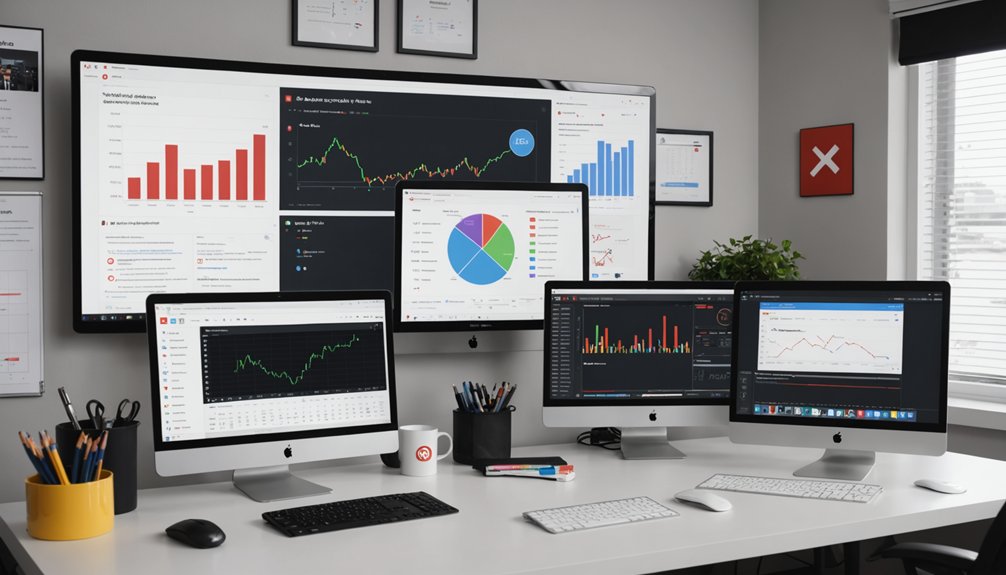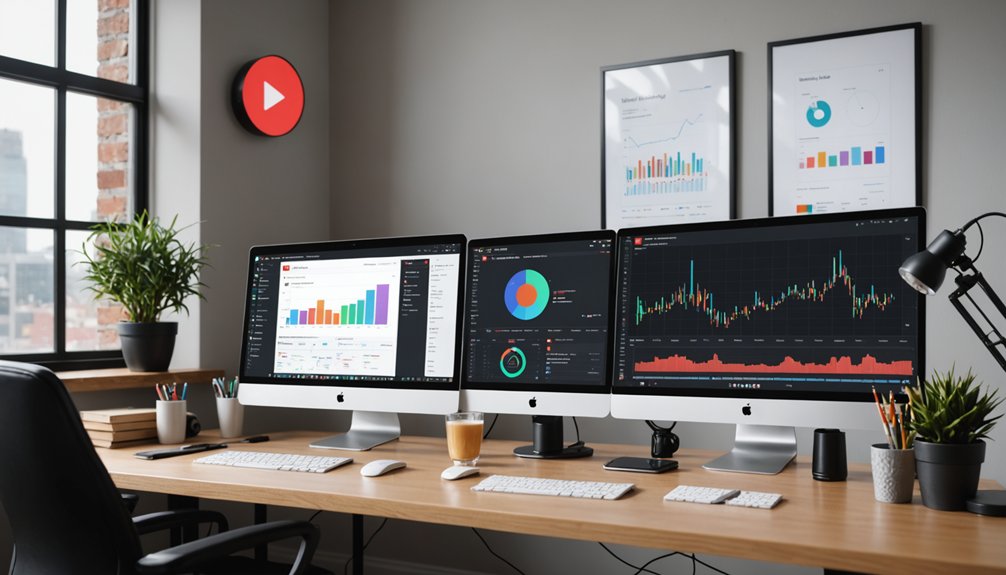YouTube success in 2025 requires mastering algorithmic signals. Smart creators focus on engagement metrics, keyword research, and high-quality content that hooks viewers immediately. Thumbnails must pop. Retention rates matter hugely. Long-tail keywords with lower competition offer better ranking potential. Consistent uploads signal reliability to the algorithm. Keyword stuffing fails; natural language wins. Interactive elements boost visibility. The days of random viral hits are gone. Strategic planning separates the buried from the discovered.

YouTube’s algorithm isn’t a mystery anymore. Content creators who understand how the system works have a clear advantage. It’s all about signals – engagement, keywords, and viewer retention. The game has changed dramatically since the early days.
Keyword research remains fundamental. Smart creators use Google Trends and specialized tools to identify search patterns. Topic clusters help organize related content themes systematically. They’re not just picking random topics. They’re building content around high-potential long-tail keywords with lower competition. Makes sense, right? Less competition means better chances of ranking.
Video optimization isn’t optional anymore. It’s survival. Titles and descriptions need target keywords. Thumbnails must pop on crowded feeds. Quality matters too – nobody’s watching pixelated videos in 2025. Similar to Instagram’s approach, content relevancy affects visibility in search results. Transcriptions help YouTube’s AI understand what you’re talking about. The algorithm loves that.
Retention metrics rule everything. Period. Videos need to hook viewers immediately and keep them watching. Short attention spans demand strategic content pacing. Three-hour rambling videos? Dead on arrival. Unless you’re Joe Rogan.
Interactive elements boost engagement signals dramatically. Polls, questions, live streams – they all matter. YouTube Shorts provide another avenue for visibility. The platform rewards creators who utilize all available tools. Lazy creators get buried. Community Tab features allow creators to maintain audience retention rates even between video uploads.
The SEO landscape keeps evolving. Google Search integration extends YouTube content reach. Consistent uploading schedules signal reliability to algorithms. Competitors’ strategies reveal market gaps. Smart creators exploit these openings relentlessly.
AI optimization requires natural language use and relevant keyword integration. The robots are getting smarter. They can tell when you’re keyword stuffing. Trust me, they know.
Engagement after the video concludes is tragically overlooked. Comments, shares, and likes dramatically impact ranking potential. Audience interaction isn’t just necessary for algorithm favor. Creators should leverage longer videos that provide comprehensive information since viewers often seek in-depth content.
The future belongs to creators who understand these systems. The days of accidentally going viral are over. Success requires strategy, not luck. Sorry if that bursts anyone’s bubble.
Frequently Asked Questions
How Do Dislikes Impact Youtube’s Algorithm for Video Ranking?
Dislikes negatively impact YouTube’s algorithm by signaling poor viewer satisfaction. They create a feedback loop that reduces video visibility in search results and recommendations.
Pretty simple math. Videos with high dislike ratios typically rank lower as the algorithm prioritizes content viewers actually enjoy.
However, engagement is engagement—sometimes controversy drives traffic. The algorithm has evolved to focus on overall user experience rather than raw numbers.
Quality content ultimately minimizes dislike impact on rankings. That’s just how it works.
Can Changing Video Titles Affect Existing SEO Rankings?
Changing video titles can definitely impact SEO rankings.
It’s a double-edged sword. New titles with better keywords might improve visibility, but you’ll lose traction built on the original title. YouTube’s algorithm needs time to reassess the content.
Established videos with solid engagement might weather the change better than newer ones. The platform’s AI understands context now, not just exact matches.
Bottom line: change titles if necessary, but expect temporary fluctuations. Nothing’s guaranteed in the wild west of algorithms.
Do Community Posts Influence a Channel’s Overall SEO Performance?
Community posts do influence a channel’s overall SEO performance, but indirectly.
They boost engagement metrics—likes, comments, shares—which YouTube’s algorithm loves. More interaction equals more visibility. Period.
Community posts keep audiences engaged between video uploads, signaling to YouTube that a channel is active and worth promoting.
They’re not magic bullets though. Quality video content remains king.
Community posts just help spread the word and keep the algorithm happy. Simple as that.
How Often Should Keywords Be Updated for Evergreen Content?
For evergreen content, keyword updates should be minimal. Smart creators do their research upfront, then let those keywords work their magic.
Quarterly reviews are enough to catch major shifts, but constantly tinkering? Bad idea. It resets search momentum.
The rule is simple: if it ain’t broke, don’t fix it. Stable keywords maintain visibility.
Only make changes when market trends drastically shift or performance tanks. Otherwise, leave that evergreen content alone. It’s doing its job.
Does Youtube Prioritize Videos With Higher Ad Revenue Potential?
YouTube doesn’t directly prioritize videos based on ad revenue potential. The algorithm focuses on engagement metrics like watch time, clicks, and viewer satisfaction.
Sure, videos that attract more eyeballs naturally generate more ad revenue, but that’s correlation, not causation. High-quality content that keeps viewers watching tends to perform well algorithmically AND monetarily.
It’s a happy coincidence for YouTube’s business model. Some creators think money talks, but the algorithm actually speaks the language of engagement.




